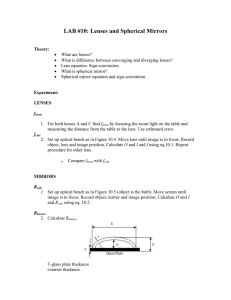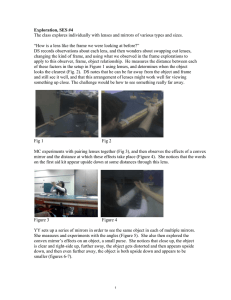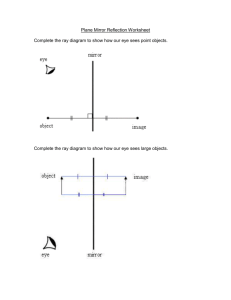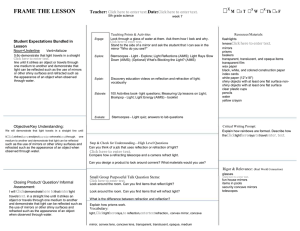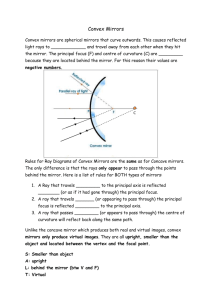Polarization
advertisement
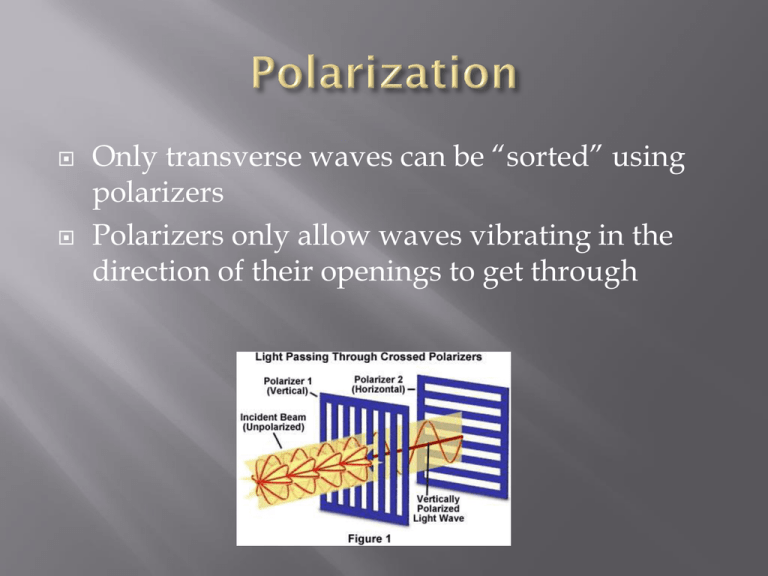
Only transverse waves can be “sorted” using polarizers Polarizers only allow waves vibrating in the direction of their openings to get through Reduction of glare Concentrating radio signals Chemistry, geology, navigation, etc. Your eyes see 3D because they are spaced apart Each eye sees a slightly different image Your brain interprets how the images go together 3D movies involve two slightly different views of the movie shown at once Polarized 3D lenses allow each eye to only see one of the views Your brain then puts together what the eyes are seeing Instead of using polarized lenses, a red and a cyan lens can be used to see a moving in 3D The two different views of the movie that are shown simultaneously are colored red and cyan Each lens filters out one of the views, so each eye only sees one of the views Then your brain does the rest of the work. Curved mirror can change the size of an image Concave mirrors make images smaller or larger Convex mirrors make images smaller (security mirrors) Concave mirrors can produce images in front of the mirror All of the light converges at points in front of the mirror causing the image to form there flexible, transparent fiber made of a pure glass not much thicker than a human hair Light gets “trapped” inside of the fibers because of total internal reflection. The light bounces off the sides of the fiber at angles larger than the critical angles causing it to stay inside the fiber



